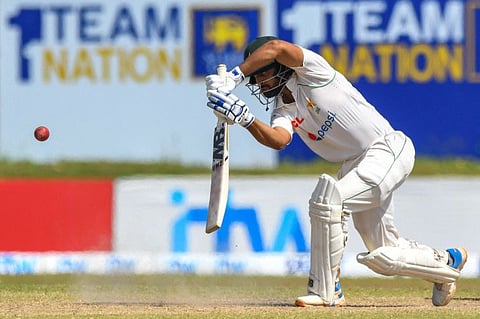Fearless batting puts bowlers to the sword in Test cricket
Even a target of 350 is no longer safe to defend in the fourth innings

Dubai: Tests are changing, especially the fourth innings. In the past, a target of 250-plus on a worn-out fourth-day or fifth-day wicket is very difficult to chase. Only a few teams have chased it successfully. Irrespective of the nature and the character of the pitch, the last two days of a cricket Test belong to the bowlers, who thrive bowling at the cracks and the roughs created by the footmarks. That puts a batter’s technique to the test.
After the advent of Twenty20 games, 250 gave way to 300 as an attainable target. Now, even 350-plus targets in Tests are not safe to defend.
Showing the way
England, under Ben Stokes, started playing an aggressive brand of cricket and chased down big totals against New Zealand and India. Against India, they scored 378 in less than four sessions, from 76.3 overs at a run rate of 4.93.
Some time ago, 250 in 50 overs (a required rate of five an over) was a winning score in One Day Internationals, but that’s longer the case. Now five runs per over in Tests, where there are no field restrictions, provide plenty of entertainment to the fans. That is total domination of the bat over the ball.
If England did it against India, Pakistan showed that they could do better by chasing 342 on a rank turner at Galle, Sri Lanka.
Relentless attack
How do teams approach these fourth-innings chases? It is simple. Batters cease to put a price on the wicket, allowing them to attack relentlessly and put the bowlers under pressure. Modern-day power-hitters clear the boundary with ease, and hence they are unafraid of being caught in the deep.
One batter, who finds his range, can cause mayhem. A century from Jonny Bairstow, Joe Root or Abdullah Shafique will be enough for the rest to rally around them to steer the side to victory.
Although these are examples of great batsmanship, it also reflects the lack of quality bowling in Tests. Quality means line and length. Bowlers, who are used to bowling several variations in white-ball cricket, are clueless when batters hammer them.
James Anderson, Glenn McGrath or any great bowler will talk endlessly about the virtues of bowling in the right areas and testing the patience of the batters. It’s time international bowlers regained their focus.
Sign up for the Daily Briefing
Get the latest news and updates straight to your inbox



